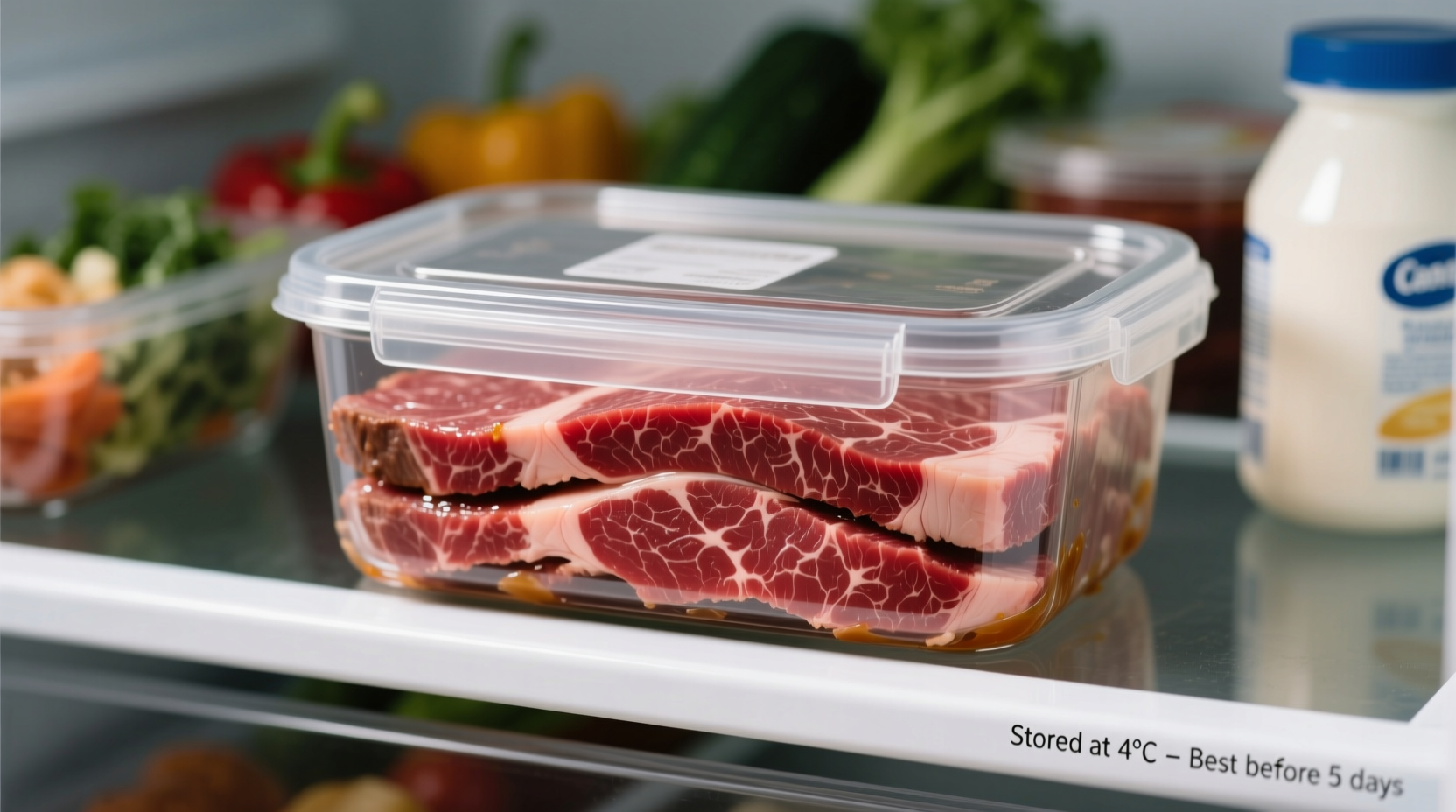Understanding exactly how long cooked beef lasts in the fridge isn't just about convenience—it's a critical food safety issue that protects you and your family from foodborne illness. When handled correctly, cooked beef provides nutritious meals for several days after preparation, but exceeding safe storage limits introduces serious health risks.
Why Proper Cooked Beef Storage Matters
Every year, approximately 48 million Americans experience food poisoning, with improper food storage being a leading cause. Cooked beef, like other protein-rich foods, creates an ideal environment for bacterial growth when stored incorrectly. Pathogens like Salmonella, E. coli, and Listeria can multiply rapidly in the "danger zone" between 40°F and 140°F.
Official Food Safety Timeframes for Cooked Beef
The United States Department of Agriculture (USDA) Food Safety and Inspection Service provides clear guidelines for cooked meat storage. These timeframes represent the maximum safe storage period under proper conditions:
| Food Type | Refrigerator (40°F or below) | Freezer (0°F or below) |
|---|---|---|
| Cooked beef (roasts, steaks) | 3-4 days | 2-3 months |
| Cooked ground beef | 3-4 days | 2-3 months |
| Cooked beef casseroles | 3-4 days | 2-3 months |
| Cooked beef gravy | 2 days | 2-3 months |
Source: USDA Food Safety and Inspection Service
Factors That Affect Cooked Beef Shelf Life
While the standard timeframe is 3-4 days, several factors can shorten or potentially extend this period:
- Initial cooking temperature - Beef cooked to proper internal temperatures (145°F for steaks/roasts with 3-minute rest, 160°F for ground beef) reduces initial bacterial load
- Cooling speed - Food that cools rapidly to below 40°F within 2 hours maintains better quality
- Storage container - Airtight containers prevent moisture loss and cross-contamination
- Refrigerator temperature - Consistent temperature at or below 40°F is essential
- Handling practices - Using clean utensils and avoiding repeated temperature changes extends freshness
Proper Storage Techniques for Maximum Freshness
Follow these evidence-based methods to ensure your cooked beef stays safe and maintains quality:
- Cool quickly - Divide large portions into smaller containers to accelerate cooling
- Use proper containers - Store in shallow airtight containers or wrap tightly in heavy-duty aluminum foil or plastic wrap
- Label everything - Mark containers with contents and date cooked
- Store at proper temperature - Keep refrigerator at 40°F (4°C) or below (use a thermometer to verify)
- Place correctly in fridge - Store cooked beef on upper shelves, not in the door where temperatures fluctuate
Clear Signs Your Cooked Beef Has Spoiled
Don't rely solely on the calendar—always check for these spoilage indicators before consuming refrigerated cooked beef:
- Off odors - Sour, rotten, or unpleasant smells (fresh cooked beef has little odor when properly stored)
- Texture changes - Slimy or sticky surface that feels tacky to the touch
- Color changes - Grayish or greenish discoloration beyond normal browning
- Mold growth - Any visible fuzzy spots of white, green, or black mold
- Off taste - If it tastes sour or unpleasant (only test if other signs aren't present)
When in doubt, throw it out. The USDA emphasizes that you cannot smell or see all dangerous bacteria that may be present in spoiled food.

Food Safety Risks of Consuming Spoiled Cooked Beef
Eating cooked beef that has exceeded its safe storage period can cause foodborne illness with symptoms including:
- Nausea and vomiting
- Diarrhea (sometimes bloody)
- Abdominal cramps
- Fever and chills
- Headache and body aches
Vulnerable populations including young children, older adults, pregnant women, and immunocompromised individuals face higher risks of severe complications from foodborne pathogens commonly found in spoiled meat.
Maximizing Cooked Beef Safety: Practical Tips
Implement these professional food handler techniques to keep your cooked beef safe:
- Use the "first in, first out" method when storing multiple batches
- Reheat leftovers to 165°F internal temperature
- Never leave cooked beef at room temperature for more than 2 hours (1 hour if room temperature exceeds 90°F)
- When freezing, use freezer-safe containers and remove as much air as possible
- Thaw frozen cooked beef in the refrigerator, not at room temperature
When Freezing Extends Your Options
If you won't consume cooked beef within 3-4 days, freezing preserves safety and quality:
- Portion into meal-sized servings before freezing
- Use freezer bags with air removed or rigid freezer containers
- Label with contents and date (use within 2-3 months for best quality)
- Thaw overnight in refrigerator or using cold water method
- Never refreeze previously frozen cooked beef
Special Considerations for Leftover Dishes
Cooked beef in mixed dishes has different storage considerations:
- Beef stew or chili - 3-4 days in refrigerator; the acidic components may slightly extend freshness
- Casseroles with beef - 3-4 days; dairy-based sauces may spoil faster
- Beef in gravy or sauce - 2 days maximum due to higher moisture content
- Cooked beef in soup - 3-4 days; broth-based soups maintain quality better than cream-based
Always follow the shortest shelf life guideline when multiple ingredients are present in a dish.
Common Questions About Cooked Beef Storage
Understanding the nuances of how long cooked ground beef lasts in the fridge versus other cuts, or how long cooked steak remains safe, helps prevent food waste while maintaining safety.











 浙公网安备
33010002000092号
浙公网安备
33010002000092号 浙B2-20120091-4
浙B2-20120091-4